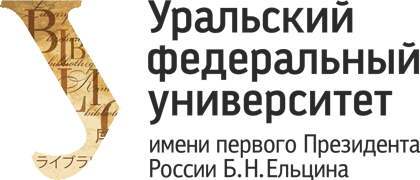Lenin’s Images in Visual Satire and the Collapse of Anti-Bolshevik Propaganda
DOI:
https://doi.org/10.15826/qr.2020.2.474Keywords:
Lenin’s image; revolution; propaganda; satire; visual history; imagologyAbstract
This article analyses anti-Leninist visual propaganda and examines the reasons for its low effectiveness. The author studies the morphological structure of Lenin’s images as an internal and external enemy, “the other”: a German spy, Judas, Hun, anarchist, or a member of the Black Hundreds. It is demonstrated that the sources of anti-Leninist images were visual political satire of the previous period and mass rumours. In some cases, anti-Leninist images were provoked by the radical statements and actions of Ulyanov himself. Anti-Leniniana was even beneficial to Bolsheviks: Lenin, previously unknown to the general public, became one of the most prominent political antagonists. Widespread public fears and premonitions were reflected in the images, which makes visual satire a mirror of the era. The low effectiveness of anti-Leninist propaganda can be explained by various factors, i. e. the use of propaganda stamps which most people had already gotten tired of during World War I; the inversion of images in the perceptions of different social strata; excessive stigmatisation of the Bolsheviks, who, as they approached October, began to be perceived as victims of the tired regime of A. F. Kerensky; and the counter-propaganda of the Bolsheviks themselves.
References
Aksenov, V. B. (2019). Narodnaya religioznost’ i obrazy dukhovenstva v gody Pervoi mirovoi voiny i revolyutsii [Popular Religiosity and Images of the Clergy during the First World War and the Revolution]. In Gosudarstvo, religiya, tserkov’ v Rossii i za rubezhom. No. 1–2 (37), pp. 272–303. DOI 10.22394/2073-7203-2019-37-1/2-272-303.
Baraban [Baraban]. (1917). No. 4, 9, 10, 14.
Bessonov, I. A. (2014). Russkaya narodnaya eskhatologiya. Istoriya i sovremennost’ [Russian Folk Eschatology. History and Modernity]. Moscow, Gnozis. 336 p.
Bich [Bich]. (1917). No. 17, 21, 24, 26, 28, 31, 37, 38, 40.
Budil’nik [Budilnik]. (1917). No. 19, 37–38.
Edinstvo [Yedinstvo]. (1917). 5 April.
Fedorchenko, S. (1990). Narod na voine [People at War]. Moscow, Sovetskii pisatel’. 448 p.
Filippova, T. A. (2015). “Vrag vnutrennii” – “vrag vneshnii”. Obrazy revolyutsii 1917 g. v russkoi satiricheskoi zhurnalistike [“Internal Enemy” – “External Enemy”. Images of the 1917 Revolution in Russian Satirical Journalism]. In Rossiiskaya istoriya. No. 6, pp. 90–98.
Filippova, T. A., Baratov, P. N. (2014). “Vragi Rossii”. Obrazy i ritoriki vrazhdy v russkoi zhurnal’noi satire epokhi Pervoi mirovoi voiny [“Enemies of Russia”. Images and Rhetoric of Enmity in Russian Magazine Satire of the First World War Era]. Moscow, AIRO-XXI. 360 p.
Findeisen, N. F. (2016). Dnevniki. 1915–1920 [Diaries. 1915–1920]. St Petersburg, Dmitrii Bulanin. 576 p.
Golubev, A. V., Porshneva, O. S. (2011). Obraz soyuznika v soznanii rossiiskogo obshchestva v kontekste mirovykh voin [The Image of the Ally in Russian Social Consciousness in the Context of the World Wars]. Moscow, Novyi khronograf. 392 p.
Grazhdanskaya voina v obrazakh vizual’noi propagandy. Slovar’-spravochnik [The Civil War in the Images of Visual Propaganda. Dictionary and Reference Book]. (2018). St Petersburg, Skifiya-print. 176 p.
Lenin, V. I. Polnoe sobranie sochinenii v 55 t. [Complete Works. 55 Vols.]. (1969). 5th Ed. Moscow, Izdatel’stvo politicheskoi literatury. Vol. 33. 434 p.
Livshin, A. Ya., Orlov, I. B. (Eds.). (1998). Pis’ma vo vlast’. 1917–1927. Zayavleniya, zhaloby, donosy, pis’ma v gosudarstvennye struktury i bol’shevistskim vozhdyam [Letters to Power. 1917–1927. Statements, Complaints, Denunciations, Letters to State Structures and Bolshevik Leaders]. Moscow, ROSSPEN. 664 p.
Novyi satirikon [Novyi Satirikon]. (1917). No. 15, 18, 21, 24, 28, 38, 39, 40, 45. (1918). No. 13.
Paléologue, M. (2003). Dnevnik posla [The Ambassador’s Diary]. Moscow, Zakharov. 864 p.
Pravda [Pravda]. (1917). 7, 8, 15 April. 1, 3, 4, 10, 12, 25, 28 May.
Pugach [Pugach]. (1917). No. 6, 8, 13, 14, 16, 20.
Reden, N. (2006). Skvoz’ ad russkoi revolyutsii. Vospominaniya gardemarina. 1914–1919 [Through the Hell of the Russian Revolution. Memoirs of the Garde-Marine. 1914–1919]. Moscow, Tsentrpoligraf. 287 p.
Rogoznyi, P. G. (2018). Pravoslavnaya tserkov’ i russkaya revolyutsiya. Ocherki istorii. 1917–1920 [The Orthodox Church and the Russian Revolution. Essays on History. 1917–1920]. Moscow, Ves’ mir. 304 p.
Rossomakhin, A. (2017). Progermanskii Iuda [Pro-German Judas]. In Istorik. No. 7–8, pp. 70–73.
Senyavskaya, E. S. (2006). Protivniki Rossii v voinakh XX veka: evolyutsiya “obraza vraga” v soznanii armii i obshchestva [Opponents of Russia in the Wars of the 20th Century: The Evolution of the “Enemy Image” in the Minds of the Army and Society]. Moscow, ROSSPEN. 288 p.
Signal [Signal]. (1917). 13 November.
Sorokin, P. A. (1992). Dal’nyaya doroga. Avtobiografiya [The Long Way. Autobiography]. Moscow, Terra. 304 p.
Strekoza [Strekoza]. (1917). No. 25, 26, 28, 30, 32, 41, 48.
Tarabukina, A. V. (2000). Fol’klor i kul’tura pritserkovnogo kruga [Folklore and Culture of the Church Circle]. Diss. … kand. filol. nauk. St Petersburg, S. n. 222 p.
Utro Rossii [Utro Rossii]. (1918). 16 January.
Vechernee vremya [Vechernee Vremya]. (1917). 25 August.










